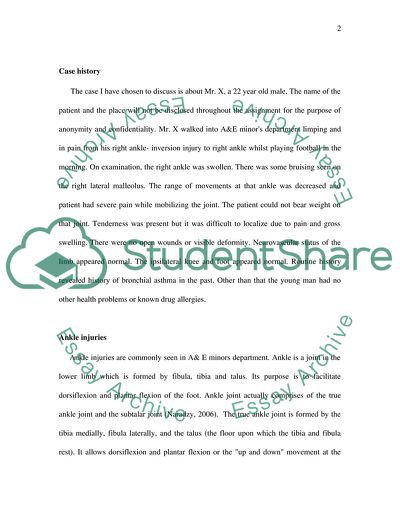Cite this document
(Ankle Injury Case Study Example | Topics and Well Written Essays - 2750 words, n.d.)
Ankle Injury Case Study Example | Topics and Well Written Essays - 2750 words. https://studentshare.org/health-sciences-medicine/1714050-immediate-care-of-people-with-non-life-threatening-problems-in-ae-ankle-injury
Ankle Injury Case Study Example | Topics and Well Written Essays - 2750 words. https://studentshare.org/health-sciences-medicine/1714050-immediate-care-of-people-with-non-life-threatening-problems-in-ae-ankle-injury
(Ankle Injury Case Study Example | Topics and Well Written Essays - 2750 Words)
Ankle Injury Case Study Example | Topics and Well Written Essays - 2750 Words. https://studentshare.org/health-sciences-medicine/1714050-immediate-care-of-people-with-non-life-threatening-problems-in-ae-ankle-injury.
Ankle Injury Case Study Example | Topics and Well Written Essays - 2750 Words. https://studentshare.org/health-sciences-medicine/1714050-immediate-care-of-people-with-non-life-threatening-problems-in-ae-ankle-injury.
“Ankle Injury Case Study Example | Topics and Well Written Essays - 2750 Words”. https://studentshare.org/health-sciences-medicine/1714050-immediate-care-of-people-with-non-life-threatening-problems-in-ae-ankle-injury.


